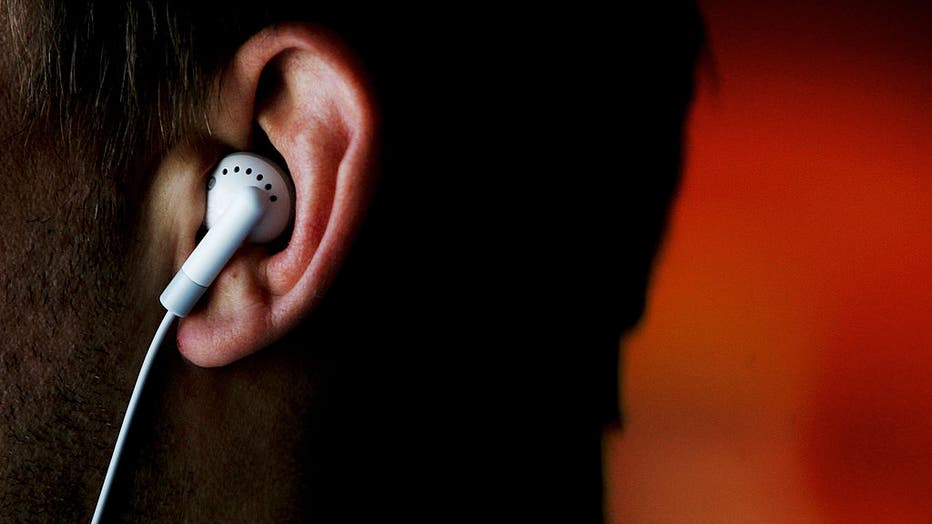Pink noise? Brown noise? Why white noise has colorful competition

Steps to prioritizing mental health in 2024
Starting off the new year fresh may include new goals or resolutions. If you want to achieve your goals, you may want to put a focus on prioritizing your mental health, says licensed mental health counselor Cherlette McCullough. She shares ways you can put your mental health first as you look forward to a healthier and happier new year.
LOS ANGELES - White noise has long been a go-to solution for drowning out background sounds and finding peace and quiet. However, recently, its colorful counterparts—pink noise and brown noise—have been gaining attention for their unique benefits. Here's what you need to know about these intriguing alternatives.
While white noise is well-known for masking background sounds, it now faces colorful competition. There’s a growing buzz around pink noise, brown noise, green noise—a rainbow of soothing sounds—and their potential effects on sleep, concentration, and relaxation.
Although the science is still emerging, with only a few small studies so far, that hasn't stopped thousands of people from listening to hours of these noises on YouTube and meditation apps that offer a palette of color noises with paid subscriptions.
What’s the science behind color noises?
White noise and pink noise may provide small benefits for people with attention-deficit/hyperactivity disorder, according to a recent review of limited ADHD studies. In theory, it wakes up the brain, said ADHD researcher and co-author Joel Nigg of Oregon Health & Science University in Portland.
"The noise provides stimulation to the brain without providing information, and so it doesn’t distract," Nigg said.
What is white noise?
White noise is a consistent sound that contains all frequencies in the spectrum of audible sound, each at equal intensity. It's often described as a "hissing" sound, similar to static on a television or radio. White noise is popular for masking other sounds, making it easier for people to concentrate or sleep.
The rise of pink noise
Pink noise, sometimes referred to as 1/f noise, has equal intensity per octave, meaning its energy is more concentrated at lower frequencies.
This results in a sound that's softer and more soothing compared to white noise. Think of the gentle rustling of leaves or the steady rain on a rooftop. Studies suggest pink noise can improve sleep quality by enhancing deep sleep and helping people stay asleep longer.
Understanding brown noise
Brown noise, also known as red noise, has even more energy at lower frequencies, producing a deeper, more rumbling sound.
It's akin to a distant thunderstorm's roar or a waterfall's low hum. Some people find brown noise particularly effective for relaxation and reducing anxiety, as its deeper tones can have a calming effect.

File - A man listens to music through earphones.
How to choose the right noise for you
Selecting the right type of noise depends on your personal preference and the specific benefits you're seeking. Here are a few tips:
- For sleep: If you're looking to improve your sleep, pink noise may be the best option. Its softer, soothing sound can help you fall asleep faster and enjoy deeper, more restorative sleep.
- For concentration: White noise is still a strong contender for those needing to concentrate or focus in a noisy environment. Its ability to mask distracting sounds makes it a great choice for studying or working.
- For relaxation: Brown noise could be your go-to if you're seeking relaxation or stress relief. Its deep, rumbling tones can create a tranquil atmosphere, perfect for unwinding after a long day.
Exploring other colorful noises
While pink and brown noise are the most well-known alternatives to white noise, there are other colors of noise to explore. Blue noise, violet noise, and grey noise each have unique sound profiles and potential benefits. As research continues, the world of sound therapy and noise masking is sure to expand even further.
Whether you prefer the classic static of white noise or the soothing sounds of pink and brown noise, there's a color of noise to suit every need.
Experimenting with different types can help you find the perfect auditory backdrop for sleep, concentration, or relaxation. As more people discover the benefits of these colorful competitors, the landscape of noise therapy is becoming more vibrant than ever.
The Associated Press contributed to this story.

